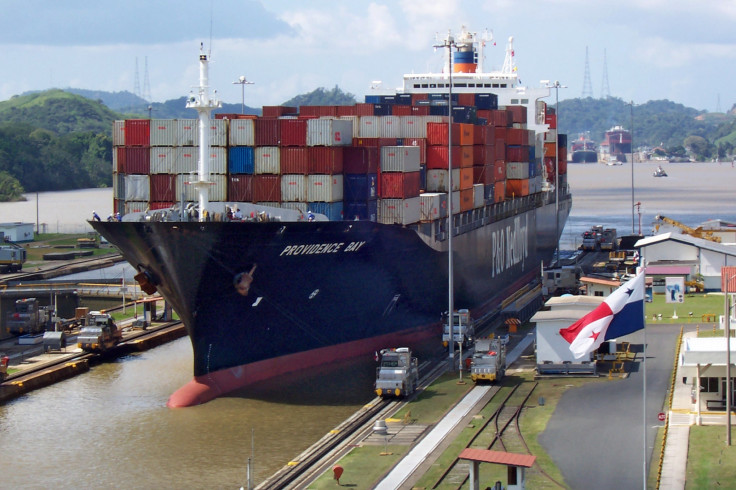Panama Canal 100 Years On: Question Marks Remain over $50bn Nicaraguan Canal

One hundred years ago today, the SS Ancon, a US Navy screw steamship, made a nine-hour sailing from one side of Panama to the other, inaugurating the Panama Canal in the process.
Prior to this, the trip required a 10,000 mile-plus jaunt around the tips of Argentina to Chile, taking more than two months, at a significant cost.
When it was completed 100 years ago, the Panama Canal was heralded as man's greatest feat of engineering. The mooted project in Nicaragua would dwarf it.
With the completion of the 51-mile Panama Canal, Atlantic-Pacific transit was revolutionised. Its opening coincided with the rise of the US as the world's dominant economic power and also gave birth to a new era of European influence in Asia.
Britain did, at the time, rule the waves and the shortcut through Panama cut about 4,000 miles from the traditional journey around the Cape of Good Hope, at the southerly point of Africa.
The canal cost more than $8bn (£4.7bn, €6bn) in today's money and took 10 years to complete. Looking back at the impact it had on the world, nobody could ever doubt that it was value for money.
One hundred years later, the world of shipping finds itself at another juncture. The future of the Panama Canal as the primary waterway linking the Atlantic to the Pacific has been called into question for the first time in a century.
Nicaraguan Rival
The Panama Canal has faced criticism over congestion, with some ships being delayed in transit by more than a week, as increasing loads of freight attempt to connect the world's busiest trade hubs in East Asia with the consumer markets in the US and Europe.
Ships have become bigger over the years and some of the widest vessels are too wide to comfortably sail through the canal.
It's hoped that a third set of locks, capable of handling the megaships, will be complete by the end of 2014. The development is part of construction work which will effectively double the size of the Panama Canal. Construction to add a second lane for freight cargo began in 2007.
It was reported in August that work on the third set of locks is 70% complete on the Pacific side, with the sponsors hoping to complete the project in 2015.
Even this upgrade, though, is not thought to be sufficient to deal with the amount of freight that travels from East Asia each day.
Chinese investors have shown an interest in expanding Panama's canal further still, but more concrete plans for investment are taking shape further north along the Central American coastline, which could threaten Panama's status as the busiest sea hub in the world.
Before ground was broken on the Panama Canal, engineers had explored the feasibility of a canal in Nicaragua, but were deterred by the country's unfortunate history of natural disasters.

Since the turn of the twentieth century, eight large earthquakes have been recorded in Nicaragua. The country is home to 20 volcanoes, although only a handful of these are active.
In July though, a Chinese businessman paired up with the Sandinistas in Managua to announce a 173 mile arterial waterway through the country.
When it was completed 100 years ago, the Panama Canal was heralded as man's greatest feat of engineering. The mooted project in Nicaragua would dwarf it.
"The project is the largest infrastructure project ever in the history of man in terms of engineering difficulty, investment scale, workload and its global impact," Wang Jing, chairman and CEO of the HK Nicaragua Canal Development Investment Co (HKND Group), told the Global Times earlier in August.
The canal in Nicaragua would, if completed, be four times longer than its Panamanian rival and will cost up to $50bn, making it one of the largest projects in history.
Unsurprisingly, shipping companies have voiced their excitement at the prospect.
Shipping Watch reports the Head of Operations at Maersk Line Keith Svendson as saying: "Building a Nicaragua Canal seems to make good sense. The canal is projected to have room for the biggest ships, while also saving 800km on a journey from New York to Los Angeles. We generally support infrastructure improvements. It brings improved opportunities for transport, and thus trade."
But before the project was even announced, the sound of knives sharpening was audible. Many are incredulous over the feasibility of the Nicaragua Canal.
For a start, there's the cost. If the bill for the Nicaragua Canal was to come in at $50bn, it would be one of the most expensive projects in history. Nicaragua is a poor country: almost half of its population lives below the poverty line.
China would be the main economic beneficiary of the canal, given that as the canal's operator would offer favourable rates to Chinese shippers. But even for the beancounters in Beijing, $50bn is a huge amount of money.
Concerns also exist over the transparency of the project. It was announced to some surprise in July, with some wondering whether the requisite diligence was undertaken in advance.
Finally, the worries over Nicaragua's proximity to volcanos and the transform faults that spawn earthquakes (there are a host of such faults offshore Nicaragua), haven't subsided.
The plans to construct a rival canal to Panama are audacious. For some, they're simply too good to be true.
© Copyright IBTimes 2025. All rights reserved.






















